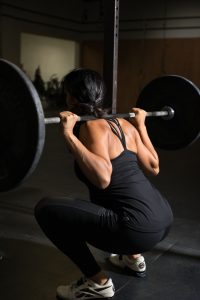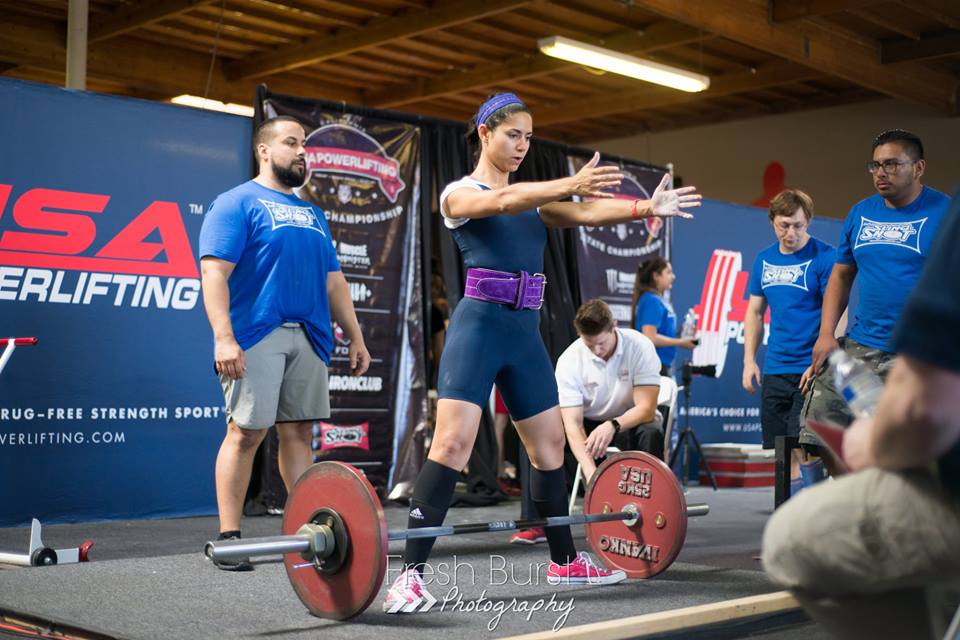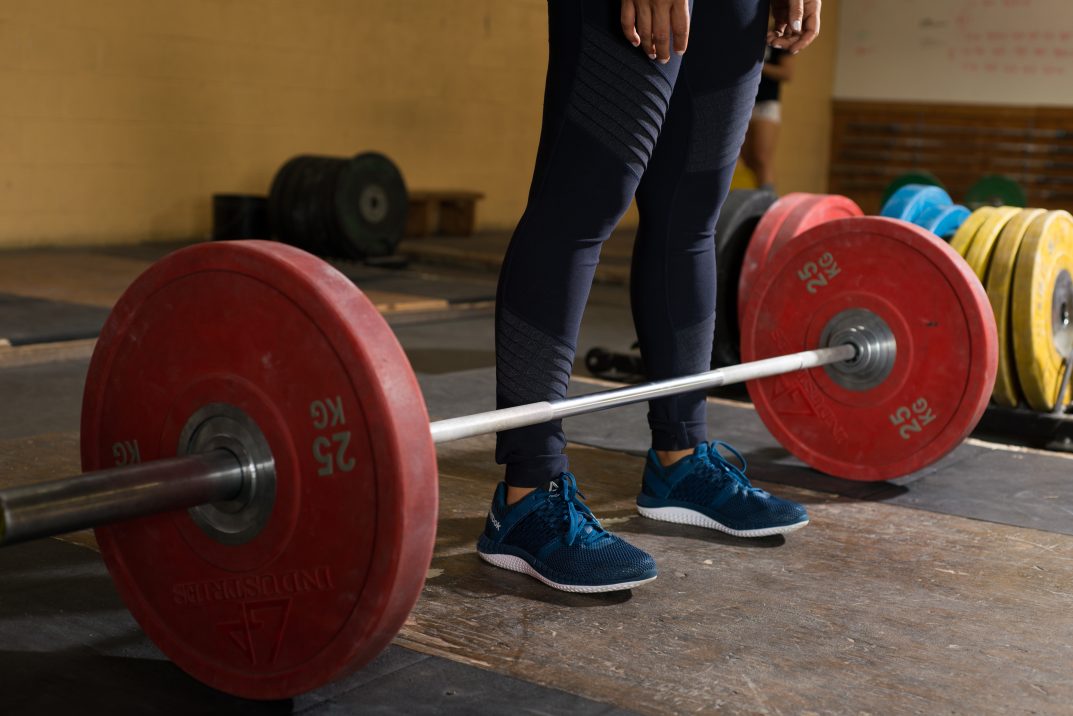I have a rule about buying new workout gear: If I’m still practicing the sport or activity diligently for at least 6 months, I’m allowed to buy gear. Otherwise, I borrow what I can from friends or make do with what I got.
For example, I took spinning classes on and off for two years before finally purchasing my first pair of cycle shoes, and that was only because at that point I was getting ready to teach indoor cycling classes and had to look the part. The same goes for weightlifting; I procrastinated on buying gear for months, and even then I added gear slowly and only when necessary.
Maybe it’s because I’m frugal and hate spending money on things that just sit in my closet (sorry, handbags don’t count), but either way I consider my fitness gear purchases carefully and buy only what’s necessary.
So when it comes to lifting weights, you can bet I didn’t jump the gun on any purchase. In fact, I slowly added in gear given where I was at in training and only when necessary. To help, I’ve written a quick guide for the top four pieces of gear you may (or may not) need to purchase to turn you into a barbell badass!
Weightlifting shoes
If you’re serious about lifting heavy and getting strong, then weightlifting shoes are worth the investment.
For starters, weightlifting shoes are more stable than your typical cross-training sneaker, providing a solid base of support to push force through. Second, and likely the most beneficial, is the shoe’s elevated heel. This small but significant design element allows for a greater range of motion around the ankle joint, which can greatly increase your depth in the squat position, help you maintain an upright torso, can clean up slight technique flaws in the squat, clean, and snatch.
But before you whip out your wallet, take a look at your training goals and training style:

If you’re more of a general fitness enthusiast who squats only 1-2x a week, then you can get away without a weightlifting shoe. In fact, I’d prefer that you either squat barefoot or with a flat shoe like Chucks.
However, if you’re into powerlifting or the Olympic lifts, you will be at a major disadvantage without weightlifting shoes. After all, these sports require that you move some heavy weight around, and having the right gear will make you more effective and safe.
A few pairs to try
Total investment: $90-200 depending on the brand
Knee Sleeves
Like weightlifting shoes, knee sleeves depend entirely on your training style and goals. Some people swear by them, while others like me, don’t mind being without them. In fact, I didn’t start wearing knee sleeves until after my first powerlifting meet, and by then I’d been in the lifting game for at least two years.
The entire point of using a knee sleeve is to protect your knees from damage or injury, which in a barbell sport can happen with the repetitive force and pounding around the knee capsule. Others claim it can enhance one’s performance but I have yet to see any scientific evidence that it does so.
Still, knee sleeves have a lot to offer for a small price. The compression element encourages blood flow, which can aid in better recovery, less swelling, and less pain or damage around the knee.
If you’re brand new to weightlifting, you don’t need knee sleeves just yet, mainly because you’re [likely] not crushing heavy mass (i.e wights) around just yet. If you’re weightlifting 3-5x a week, however, worth your investment. Just be sure to wash them because those things can stink worse than any men’s hockey room!
A few options I like:
Rehband (this is in large, make sure you get the right size for you)
Total investment: $30-$45
Weightlifting belt
There will come a time when a weightlifting belt will save you in a heavy lift, and it is 100% worth your time and money to get you a good one. You’re likely to go through quite a few belts in your lifting career, because like leggings, you have to try a few types to discover which ones you like.
You can choose from thick leather belts (necessary for powerlifting), ones with velcro strap (easy to train with), or ones with levers or belt loops. My advice is to try as many as possible in training, using whatever your gym or your training partners have on hand so you can see what you like best.

Weightlifting belts are usually used in very heavy lifting to stabilize the spine and reduce stress on the back. There is absolutely no need to use them every time you train or when you’re lifting at 60-80% of your 1-RM. I’d rather you practice the lift without a belt than grow too dependent on them. With that said, belts can help you get stronger in your lifts and improve your performance if you use them correctly in training.
Make sure the belt fits you well and that you can still breathe when wearing one. Don’t make it so tight that you can barely squeak out a sentence, and definitely use it for near-max lifting attempts!
Here are a few I’ve used and like:
Suede leather belt (also great for powerlifting)
Total investment: $15-100
Wrist wraps
I’ll admit I don’t wear wrist wraps myself just yet. Mainly because I’m not pressing overhead with a considerable amount of weight where one is necessary. Yet, like the knee sleeves, wrist wraps can go a long way in saving your joints from future damage from heavy, repetitive lifting.
Not only does the compression help stabilize the wrist joint during heavy lifts like the bench press, push press, and jerk, but wrist wraps can help you strengthen and target the muscles you’re actually training instead of passing some of the load over to the wrist.
Wrist wraps are a great training tool, but not necessary all the time. Becoming too dependent on this training tool can quickly turn into a disadvantage that leads to injury or decreased performance down the line. For example, you don’t need to wear wrist wraps during your warm-up lifts or if you’re pressing 60-75% of your 1-RM. However, you can and should use wrist wraps on training days where you’re exercising fairly close to your 1-RM or maxing out altogether.
Total investment: $15-$30
Trish’s Tips for New Gear
Shoes, sleeves, belts, and wraps are training tools not rules. Depending on your sport or fitness goals, you may not need all or any of these pieces of equipment.
While lifting gear offers a lot of performance benefits, they can also act as a disadvantage if you become too dependent on them, or worse, you use them to mask any pain or mobility issues you may have. Remember that wrist wraps can’t make up for poor mobility issues or technique flaws, just like knee sleeves can’t save your knees from pre-existing pain and discomfort, and belts can save your spine if you have bad technique or underlying issues. Start with one piece of gear (I recommend shoes), and add on the others only as needed.
Want more tips and coaching insights on lifting weights, getting stronger and more mobile? Sign up for the the free newsletter to get weekly content, exclusive discounts, and more!
Sign up for free content!

